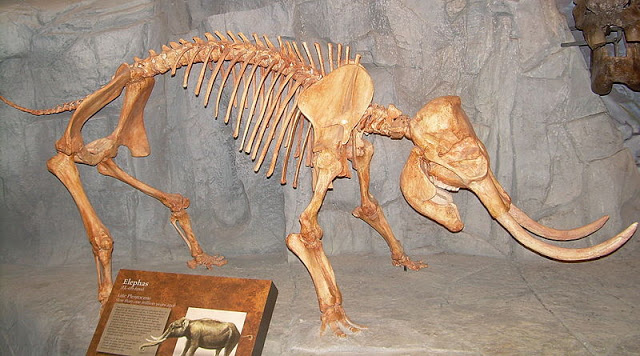
At the 2015 Society of Vertebrate Paleontology meetings, researcher Michael Cherney of the University of Michigan, presented findings about weaning age (i.e. when a calf stops nursing) in fossil mammoths. By studying modern African elephants at the Toledo Zoo, Cherney was able to characterize the isotopic effects of weaning in a close relative of mammoths. Decreased nursing causes predictable changes in the isotopic composition of elephant tail hairs sampled over time.
The key to Cherney’s research is that these same nitrogen isotopes are preserved in fossil mammoth tusks, which grew throughout life. Records of early life history in tusks from juvenile mammoths can be used to determine the age at which individuals were weaned. He combined this with the knowledge that climate stress has been associated with delayed weaning in modern elephants, while overhunting of can lead to accelerated maturation in populations. His results suggest that weaning age in Siberian woolly mammoths decreased leading up to extinction. This is inconsistent with climate change being the cause of extinction and provides evidence for overhunting shortly before they went extinct.
“I think analysis of life-history data from fossil proboscidean tusks is a tool that could resolve questions concerning the late Pleistocene extinctions of various fossil elephant species. These insights also give context for understanding other contemporaneous extinctions and the impact of past human populations on their environments,” said Cherney.
Note: The above post is reprinted from materials provided by Society of Vertebrate Paleontology.










